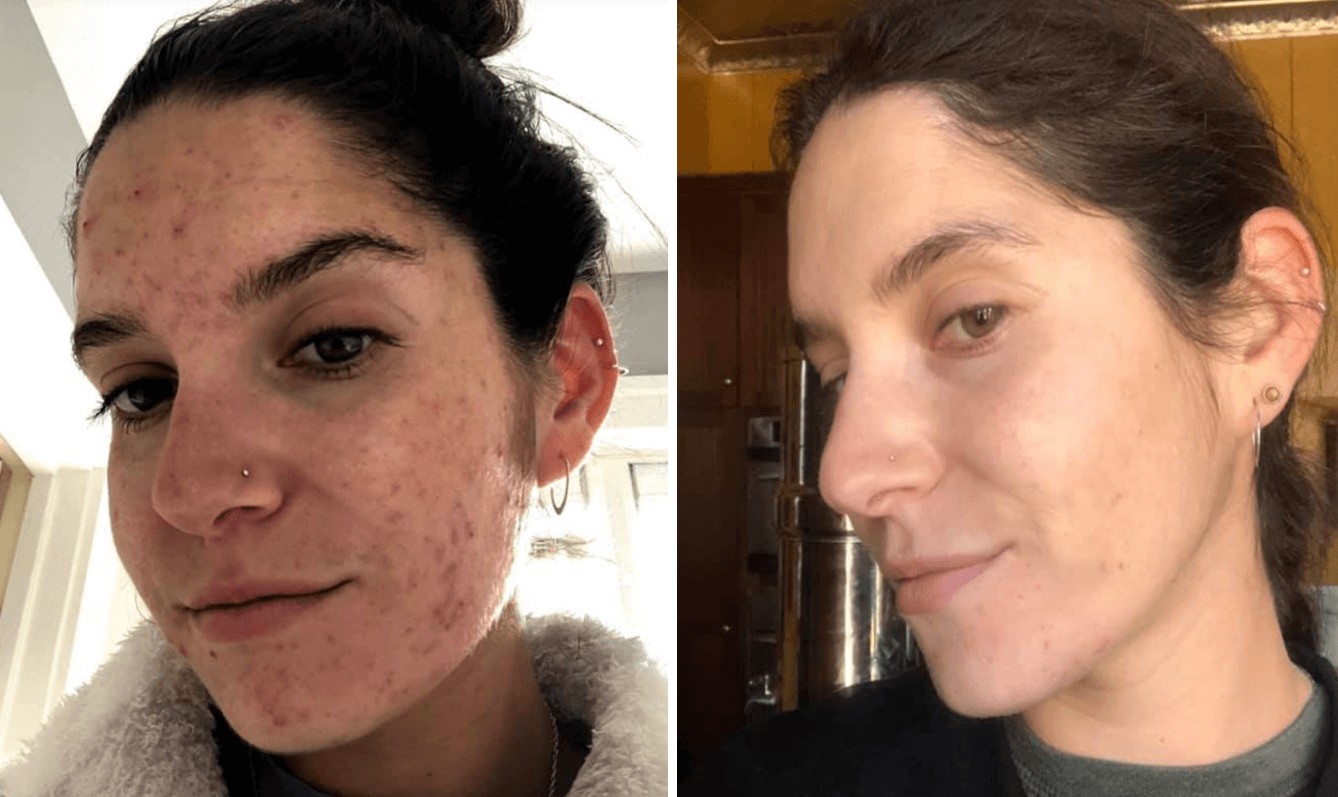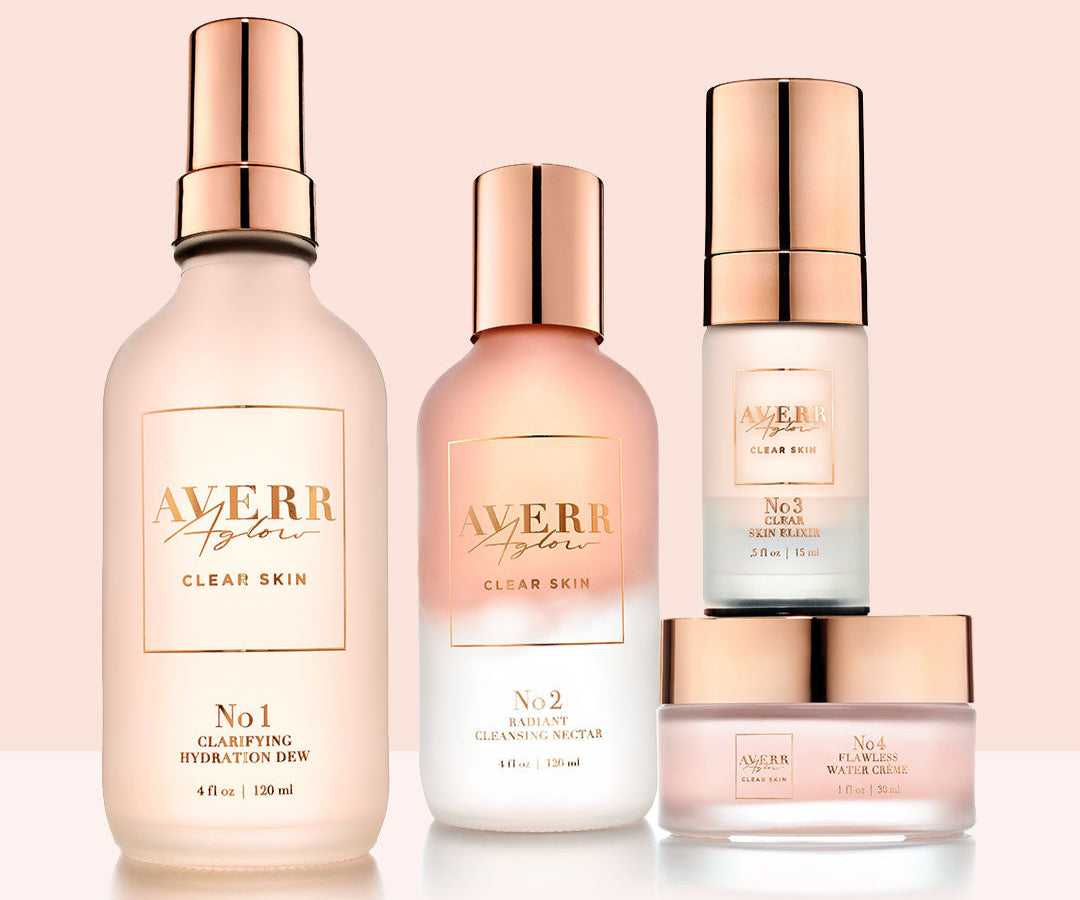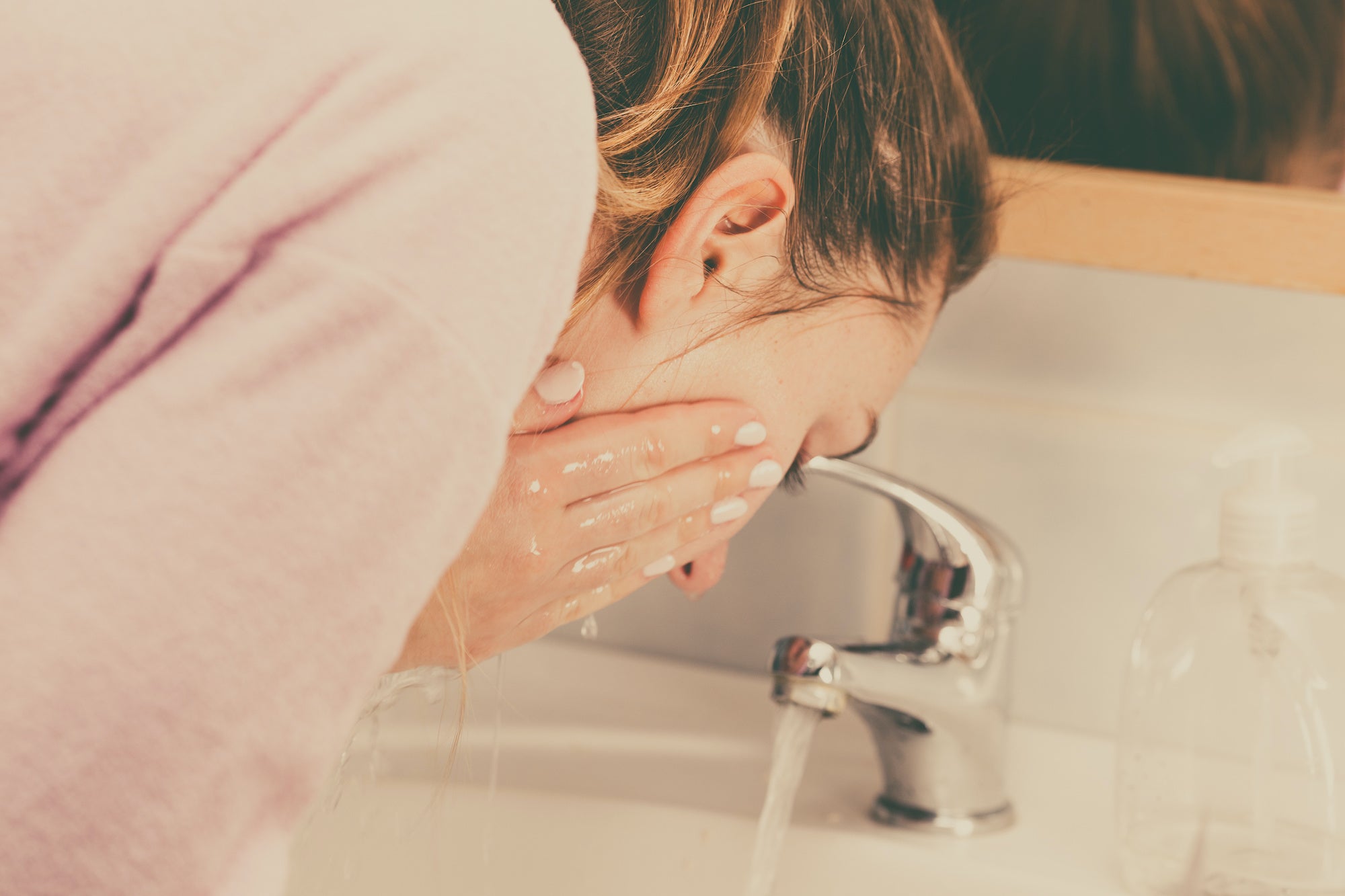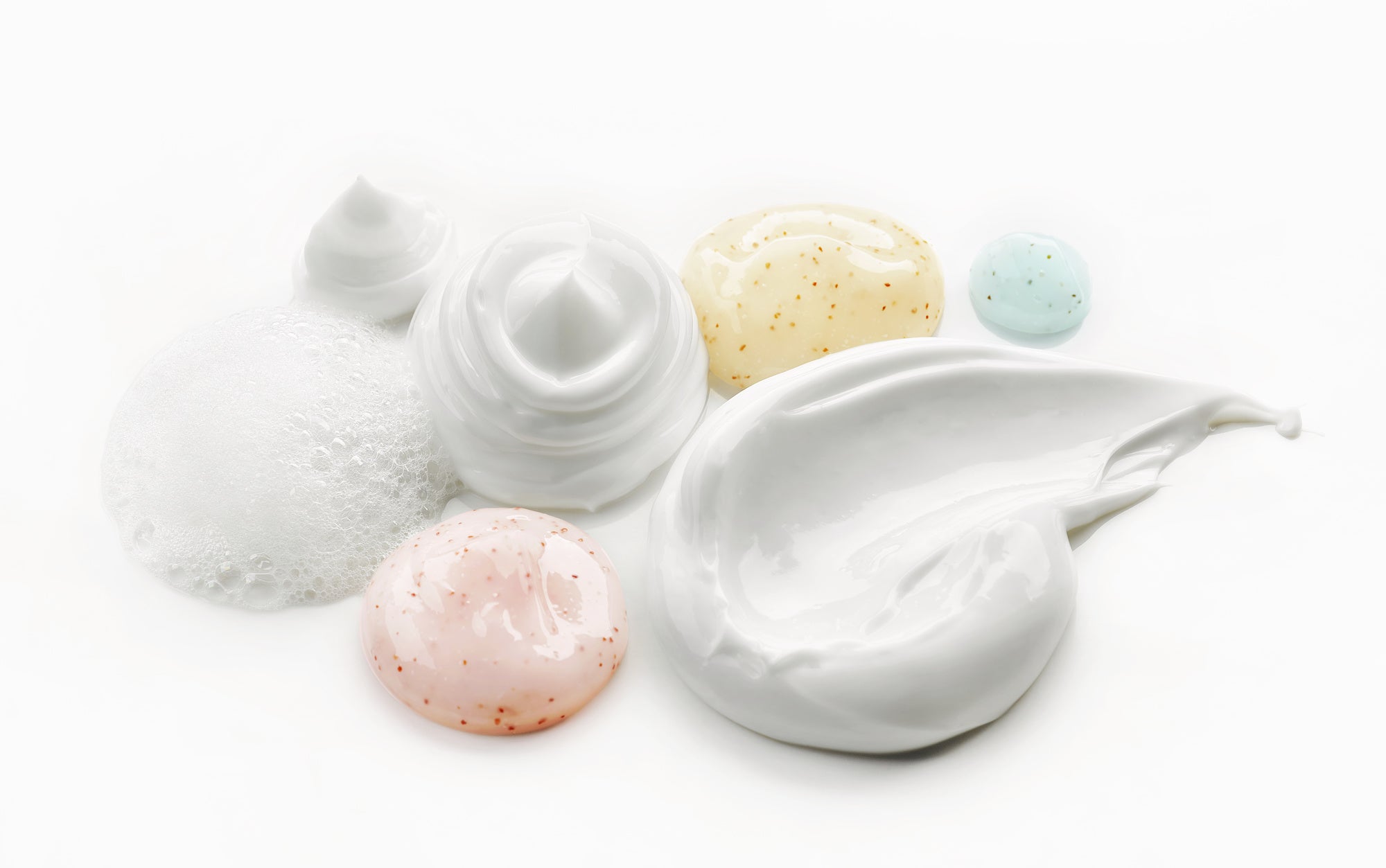
What is Skin Purging and Why Does It Happen?
Have you recently introduced new skincare products into your routine and noticed increased breakouts?
You probably heard of purging if you have been breaking out and/or struggling with breakouts. Many breakout-prone people get nervous around the term purging. Why? Purging usually means breaking out more or worse than you typically break out.
It can get worse before it gets better is a real thing and skin purging is very common when starting new products. It can cause much confusion and frustration because, ironically, it typically happens with products specifically designed to prevent breakouts and make your skin clearer, so why would they make you break out more?
It can also be an emotional part of your skincare journey because who wants to get worse when your current breakouts are bad enough?
Is it just skincare companies or dermatologists lying to you to get you to buy more products, or because your skin is unique and what would generally clear someone else up is causing you to break out?
The answer may surprise you.
Why Does Purging Occur?
A breakout consists of acne-causing bacteria, sebum (your skin's naturally produced oil), and dead skin in your pores. When pores produce sebum, it mixes with acne-causing bacteria, making the pore sticky and attaching to dead skin. When these three mix together, a cramped and clogged pore is created, causing a breakout. This condition starts below the surface of your pores.
Many do not realize that breakouts form under the skin long before they ever "break out." Sometimes up to 2 months before. Once a breakout is formed under the surface, it has to come up and out of the skin in the form of a breakout sooner or later. Purging occurs when the new skincare causes those breakouts to appear and come up sooner. It dislodges congestion lying below the skin's surface, speeding up this process by pulling up what has been slowly building up under the skin all at the same time, leading to more breakouts simultaneously.
These breakouts would have come up in their own time, but the products are just causing this at a faster pace so it can feel like it is all at once, making it look like you are breaking out heavier than you usually would.
To achieve clear skin, you must remove what is going on below the surface and eliminate the inflammation lurking that has been forming over the last two months.
When you're starting new skincare products, they can help remove what has already formed up and out of the skin. This is not specific to our products or any products out there—it's part of how the body works with acne and in conjunction with breakouts.
Inflammation forms below the surface over two months and finally pops up. Skincare will speed this up, and it's a good thing because you're after clear skin, right? Once it's formed, it has to come out, which is part of the process.
In essence, purging is a positive response to the active ingredients in your skincare products. It signifies that these products are effectively stimulating cellular turnover and unclogging pores, paving the way for clearer, more healthy skin in the long run.
Now, you may say, "But I am breaking out in places I've never broken out". Yes, this is also a possibility. You might say, Camille, "This makes no sense. Why would I break out more if I am trying to clear up my skin?"
Trust me, I wish you did not have to break out any more than you have to. When you use new skincare, you are turning over skin cells, and guess what happens when you do this? This skin can get trapped and actually lead to more clogged pores until you work through reducing the amount of these dead skin cells and acne causing bacteria.
It's like when you dust and vacuum your house; you're stirring up dust into the air while you're working on removing it. You're working to clean it up, but if the house hasn't been cleaned in a while, you may have to dust it a few times. The same concept applies to your skin cells. You're exfoliating and turning over new cells, which loosens up dead skin that can lead to clogging where you don't usually break out. It doesn't last forever, but it can happen, and it is part of the clearing-up process.
So, is this a bad thing that is happening? No, it is not. This is actually a good thing because skin cell turnover is a continuous renewal of the outer layer of your skin. The old cells on the skin's surface shed off as the new layer of cells pushes upwards. On average, this cellular turnover (not the purge) can take four weeks to complete. But this rate depends on your age. A newborn baby's rate is much faster compared to an adult's. For young adults, it can take about 28 days, while for mature skin, it can take about 40-60 days. This is why babies' skin is fresher and smoother than more mature skin because the rate of skin refresh is much faster.
What Ingredients Cause Skin to Purge?
A purge is primarily triggered by the introduction of skincare products that contain active ingredients designed to pull up already formed breakouts lurking below the surface and to turn over skin cells leading to brighter, clearer, more glowing skin.
A lot of people will comment that this only occurs if you're using active based ingredients like retinol but remember plant extracts, oils, etc contain their own active ingredients that will help cellular turnover which produces this concept of pulling up inflammation.
I've seen over and over that it occurs not just from ingredients like retinol or vitamin C, but rather from nutrient dense ingredients that help with your skins cell turnover.
For example, if you look at some of our labels, you will see ingredients like cucumber, French pink clay, manuka oil, and rosehip. These all help increase cellular turnover to reveal clear, radiant skin.
Our French pink clay has a negative-ion charge that acts as a magnet and pulls up impurities and buildup under the skin. It is used for this very reason:—to pull up what's below the surface.
We choose to use more natural ingredients because I have found, through over nine years of helping women with this issue, that they go to work on turning over that skin, pulling up the inflammation, nourishing the skin and microbiome, and ultimately leading to completely clear, gorgeous, healthy, smooth skin. The results from the products don't just clear away this buildup; they help to bring skin back to life, making it look and feel great again. When I was breaking out in the past, I would use benzoyl peroxide or salicylic acid, but they never helped me fully see lasting clear skin, let alone the glowing results I was after.
Does Everyone Purge?
Only some people experience this concept of purging, but there a few things you can do to speed up the purging process but first let's look at what factors can dictate if you might experience a purge?
- How much inflammation is below the skin surface - have you been breaking out for months or years? If it's been a long time dealing with this issue, there has likely been a continuous process of buildup cycling through forming below and then popping up. Our goal is to stop this cycle from happening. My products can pull up what's formed, but they also go to work, stopping this process in its tracks from occurring. They help eliminate harmful bacteria, they balance the sebum so it stops overproducing, and they exfoliate the dead skin so it is whisked off your face, leading to less chance of new clogged pores.
- Individual Skin Sensitivity - Each person's skin reacts differently to various ingredients. Individuals with sensitive skin may experience a more noticeable purging phase than those with less sensitive skin.
- Which products are you using - Some of our products should be incorporated at different times in your routine depending on where you are in your results with your skin. If you are starting and are new to my products, start with our Clear Skin Kit. This is our signature routine for breakout/problematic-prone skin. This is a simple routine that includes our #1 Clarifying Hydration Dew and #2 Radiant Cleansing Nectar, which are used together to cleanse skin. This combo helps gently exfoliate and turn over those skin cells. The kit also includes our #3 Clear Skin Elixir, an overnight face mask containing French Pink Clay, which helps clear breakouts and prevent new ones from forming. It includes our #4 Flawless Water Cream, containing prebiotics to support your microbiome.
- How consistent you are with the products and routine - Stick with it, do not break the cycle. If you stop the skincare or treatment, then yes, the purging can stop, but you will continue to break out on your regular cycle and likely still be looking to achieve clear skin. If this occurs to you, these breakouts must come up so you can see clear skin.
Skin Purging Symptoms
- Increased Breakouts: One of the primary indicators of purging is an initial increase in breakouts. This may manifest as pimples, whiteheads, or blackheads in areas where you typically experience skin issues. Remember, you can break out in places you have never broken out before as well.
- Redness and Inflammation: The skin may appear redder than usual during the purging phase. This is a natural response to increased blood circulation as the active ingredients stimulate cellular turnover. Redness is often temporary and should subside as your skin adjusts.
- Sensitivity: Some individuals may experience mild sensitivity during skin purging.
- Short-lived Symptoms: Importantly, the symptoms of purging are temporary. Unlike an adverse reaction, which may persist or worsen with continued product use, purging symptoms do not last forever. If you are experiencing itchiness, redness, swelling, rash, or anything to that nature though that is a reaction and not a purge. In that case, the products should be discontinued as likely you are having issues with the ingredients themselves and they are not for you.
How Long Does Skin Purging Last?
The skin purging period is unpredictable. It starts within 1-4 weeks of beginning your skincare routine and typically lasts between 2-8 weeks. However, everyone is different, and it can last longer. Once it has passed, positive results will be seen soon thereafter. Your skin will clear.
Sometimes clients have said to me, "Well, I switched products and I stopped breaking out. My new products are not making me purge." Yes, because you stopped the cycle.
Your new product might not contain as many active ingredients and may slow the rate of turnover in your skin. It also might not be as potent for helping draw up the inflammation from under the surface in turn slowing down the purging.
Our products pull up what's formed and again, once it's formed it has to come up and out to see clear skin.
You're going to see that breakout sooner or later, regardless. That's why some customers commented that they saw an increase, but then their skin completely cleared up and stopped breaking out after it. They also comment how they might get a "pimple" here and there and it's unlike anything else they have tried and the results are unparalleled.
If you switched to another product and suddenly stopped purging, can you really tell me that with continued use of that product, you fully cleared up and are not battling breakouts anymore? Even Isotretinoin has the warning that you can break out more before you clear up. It is the nature of breakouts, so if you are prone to purging you are not going to get around it if you want clear skin.
Don't just take it from me though, do the research there are independent studies that show this.
I've seen it over and over again, and I get people to clear their skin if they work through it and work with their bodies.
Can You Speed Up Skin Purging?
Here are a few ways you can help make this process faster:
- Facials—Facials with extractions while sometimes painful can be beneficial because they can help extract the inflammation from the skin faster and help skin cell turnover. This gives the products a chance to start clearing the skin faster rather than having to work through the inflammation. Multiple facials could be beneficial and speed up this process a ton, depending on whether or not a lot is below the surface.
- Limit sugary foods, dairy products, and fast food. These foods contribute to inflammation below the surface of the skin.
- Gentle exfoliation daily—If you're using our Clear Skin Kit, the #1 and #2 cleansing duo will help gently exfoliate and turn over those skin cells. For additional exfoliation, you can add a chemical/physical exfoliator 1-2 times a week.
- Stay consistent - Stick with it, do not break the cycle. If you stop the skincare or treatment, then yes, the purging can stop, but you will continue to break out on your regular cycle of breakouts. If this occurs to you, these breakouts must appear so you can see clear skin.

I know what it's like to want clear skin, and I know you want results overnight and to stop battling this issue. I get it, and I know how emotional it can be to feel like you are on a roller coaster and whether you will ever see results. I struggled with breakouts for over 16 years before I finally figured out how to clear my skin for good. It was a very difficult journey; I tried all the skincare you could imagine, went to multiple dermatologists, cleaned up my diet, got facials, prescription drugs, you name it, I've tried it. After digging into all the research, I cleared my skin, and I have not broken out for over nine years. I started Averr Aglow in 2015 and have helped hundreds of thousands of women go from struggling with their skin to being clear and glowing.
If you're new to Averr Aglow, please check out my Clear Skin Kit, which I mentioned above, and start there with my signature routine. Also, pair it with the Luminous Complexion Toner if you need help with redness and the look of large pores. It's our toner for acne-prone skin and it makes a wonderful addition to the routine and achieving clear skin.
- Cami - Founder of Averr Aglow







